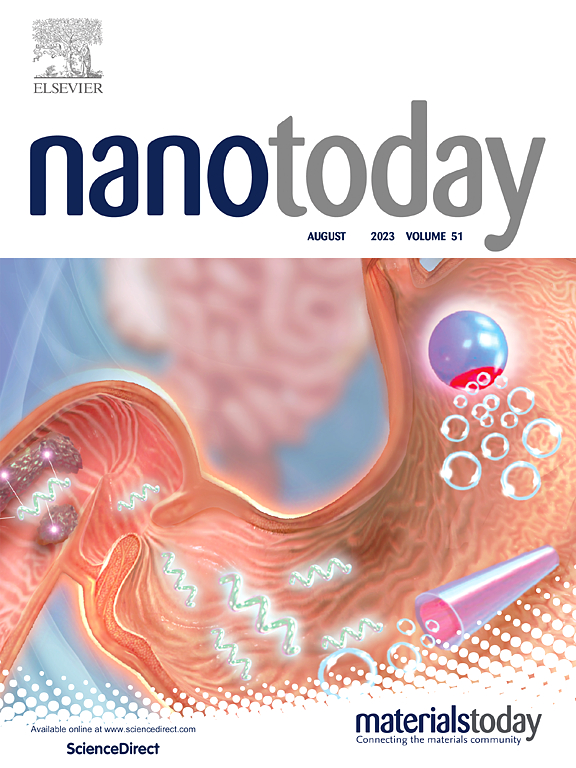Tracing the graphitization of polymers: A novel approach for direct atomic-scale visualization
IF 13.2
1区 材料科学
Q1 CHEMISTRY, MULTIDISCIPLINARY
引用次数: 0
Abstract
Due to its excellent physical, chemical, and electrochemical characteristics, pyrolytic carbon has become a promising material for a wide range of advanced technologies. Pyrolytic carbon can be obtained through the pyrolysis of a polymeric carbon precursor at high temperatures and in inert atmosphere. By tuning the pyrolysis conditions, the hybridization of carbon atoms and thus the physicochemical properties of the derived carbon can be tailored. Advancing its development requires a deeper understanding of the graphitization process. In this context, an in situ microstructural analysis of the pyrolysis process is needed. This work presents the microfabrication of suspended polymer thin film structures on transmission electron microscopy heating chips, by two-photon polymerization 3D printing. We visualized graphitization of these films during in situ transmission electron microscopy heating studies. The favorable identified conditions are a thin film with a thickness of around 700 nm pre-pyrolysis, a pyrolysis profile reaching a maximum temperature of 1300°C and a minimum of 2 h of dwell at this temperature. An increase in the number of stacked graphene layers was observed over dwell time. Overall, the developed method has the potential to enable the visualization of graphitization of different polymer precursors and thus help predict the microstructure and properties of pyrolytic carbon depending on its fabrication conditions.
追踪聚合物的石墨化:原子尺度直接可视化的新方法
由于具有出色的物理、化学和电化学特性,热解碳已成为一种前景广阔的材料,可用于多种先进技术。热解碳可在高温和惰性气氛下通过热解聚合物碳前体获得。通过调整热解条件,可以定制碳原子的杂化以及衍生碳的物理化学特性。推进石墨化的发展需要对石墨化过程有更深入的了解。为此,需要对热解过程进行原位微结构分析。本研究通过双光子聚合三维打印技术,在透射电子显微镜加热芯片上实现了悬浮聚合物薄膜结构的微加工。在原位透射电子显微镜加热研究中,我们看到了这些薄膜的石墨化。确定的有利条件是:热解前薄膜厚度约为 700 nm,热解温度最高可达 1300°C,在此温度下至少停留 2 小时。随着停留时间的延长,堆叠石墨烯层的数量也在增加。总之,所开发的方法有望实现不同聚合物前驱体石墨化的可视化,从而有助于根据热解碳的制造条件预测其微观结构和特性。
本文章由计算机程序翻译,如有差异,请以英文原文为准。
求助全文
约1分钟内获得全文
求助全文
来源期刊

Nano Today
工程技术-材料科学:综合
CiteScore
21.50
自引率
3.40%
发文量
305
审稿时长
40 days
期刊介绍:
Nano Today is a journal dedicated to publishing influential and innovative work in the field of nanoscience and technology. It covers a wide range of subject areas including biomaterials, materials chemistry, materials science, chemistry, bioengineering, biochemistry, genetics and molecular biology, engineering, and nanotechnology. The journal considers articles that inform readers about the latest research, breakthroughs, and topical issues in these fields. It provides comprehensive coverage through a mixture of peer-reviewed articles, research news, and information on key developments. Nano Today is abstracted and indexed in Science Citation Index, Ei Compendex, Embase, Scopus, and INSPEC.
 求助内容:
求助内容: 应助结果提醒方式:
应助结果提醒方式:


